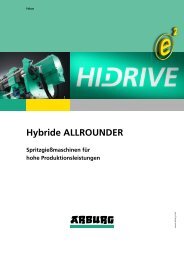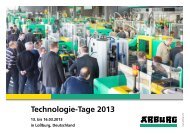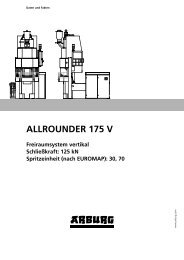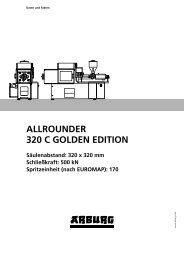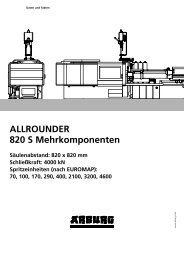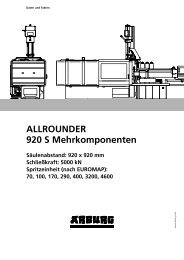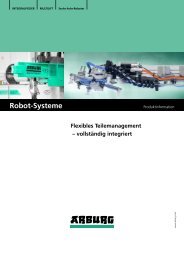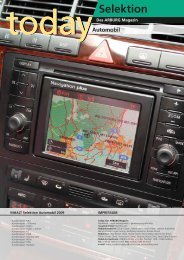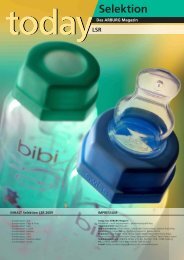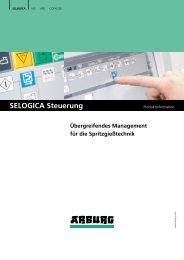The ARBURG Magazine - British Plastics & Rubber
The ARBURG Magazine - British Plastics & Rubber
The ARBURG Magazine - British Plastics & Rubber
Create successful ePaper yourself
Turn your PDF publications into a flip-book with our unique Google optimized e-Paper software.
drives<br />
lic drives. Here, instead of continually working<br />
at nominal speed, the speed and therefore<br />
the power of the motor are adapted<br />
to the low power requirement during long<br />
cooling periods, for example. A frequency<br />
converter infinitely adjusts the speed of the<br />
motor in accordance with the output that<br />
is actually required. So, even at partial load,<br />
the pump and motor operate with optimum<br />
efficiency and with correspondingly<br />
low energy consumption. No-load losses<br />
are effectively minimised, and energy savings<br />
of up to 30 % can be achieved. Depending<br />
on the injection moulding process<br />
in question, the additional cost of a variable-speed<br />
drive such as the <strong>ARBURG</strong> energy-saving<br />
system (AES) can be amortised<br />
Rotational speed [rpm]<br />
in just two years. In addition, optimised-<br />
efficiency drives generally minimise wear<br />
and produce less heat loss. This not only<br />
reduces the heat emitted into the environment,<br />
but also allows for energy savings<br />
with regard to machine cooling. With innovative,<br />
energy-efficient drive technology, it<br />
is certainly possible to simultaneously improve<br />
both costs and environmental performance.<br />
It is often only the higher investment<br />
costs that act as a deterrent. However,<br />
in drive technology in particular, the expected<br />
running costs are considerably higher<br />
than the investment costs. A detailed<br />
comparison of drive technologies and an<br />
estimate of the anticipated running costs<br />
are therefore always worthwhile.<br />
without AES<br />
with AES<br />
today 40/2009<br />
Photo: MEV Verlag GmbH<br />
23<br />
With energy recovery, no more energy is lost<br />
during braking (above). Energy-saving motors<br />
are more efficient (left). Speed-controlled<br />
motors are energy-efficient and function<br />
according to demand (right).



